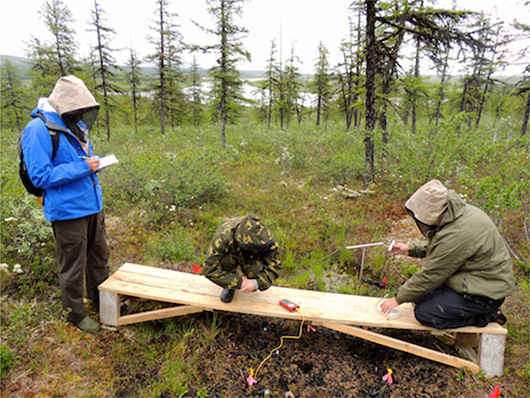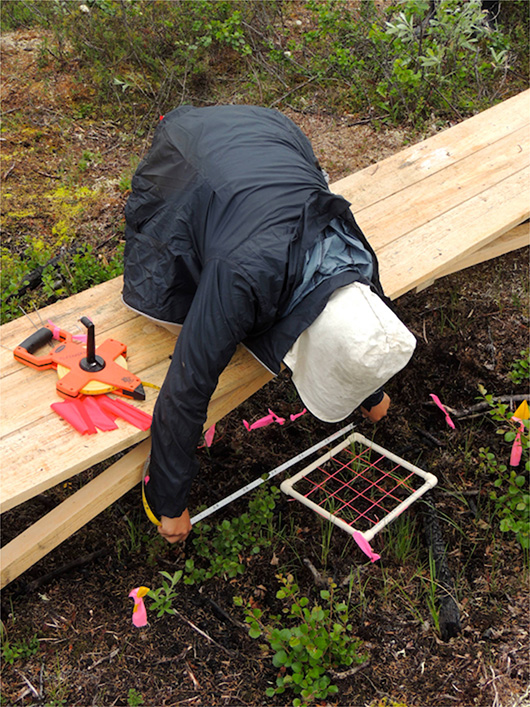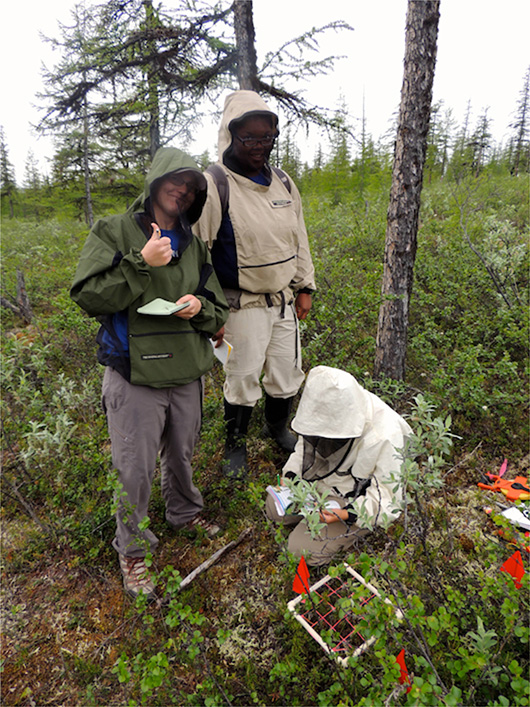We have arrived in Cherskiy after a long time traveling and have begun the process of getting to work. It is very exciting to be around all of the science and different projects going on! The lab is a hive of activity and the core students have jumped in all the way. The core students have been talking with the researchers and going out to the various project sites. I have had a chance to go out with several of them and learn more about the experiments being conducted.
The first day out our group included Erika, Jessica, and Kenzie and we walked to the site known as Y3. This is where Dr. Heather Alexander has set up her studies on the effect of fire on the boreal forest. She began by making observations in areas where natural fires had occurred and noting the difference in the plants that have moved into the area since the fire. She then found an area where fires had not occurred and proceeded to apply controlled burns across twenty plots of forest ground, at three different depths of burns. Over the last two years Dr. Alexander has been taking measurements and recording the numbers and types of plants that are repopulating the plots.

Jessica, Erika, and Kenzie at the burn plots.
The students were given directions and quickly began collecting data from the plots. Along with the thaw depth, which is a measurement of how deep the permafrost is from the surface, the students recorded the soil temperature and moisture at each plot. Then the real work began. Point-Framing is one way of calculating the total biomass, or the amount of living plants in each plot, and identifying each species is one way of measuring the biomass. To get biomass by point- framing the students used small plastic square with a grid made by running strings across in both directions, making a checker board pattern. The grid was laid down in a part of the plot. Then Erika placed a long thin wire rod into each grid corner and identified each plant that was touching the rod and how many times it was touching. This work will help determine how the carbon cycle, as well as the vegetation, will change in response to fires.

Erika using the point-frame to find biomass.
For many of the students this is their first experience of being in the field and making these observations for themselves. Everything they do here is an opportunity to learn a new piece of the puzzle that will will help them to understand the dynamics of this area and will add to their bag of knowledge as each student develops their projects.

Learning and having fun!




Comments(3)-
-
-
Barbara Case says
July 15, 2014 at 12:00 amHi John,
Glad to see you arrived in Cherskly. Have you seen any wildlife?
Barbara
susan says
July 18, 2014 at 12:52 amgreat point framing!!
it’s so fun when students get to do real science, it’s the only way to go!
John Wood says
July 27, 2014 at 8:45 amBarbara,
Thank you for the note. We have heard that there are moose and bears in the area but have not seen any yet. There is a family of Great Grey Owls that live in the forest close to the station. We will keep our eyes open!